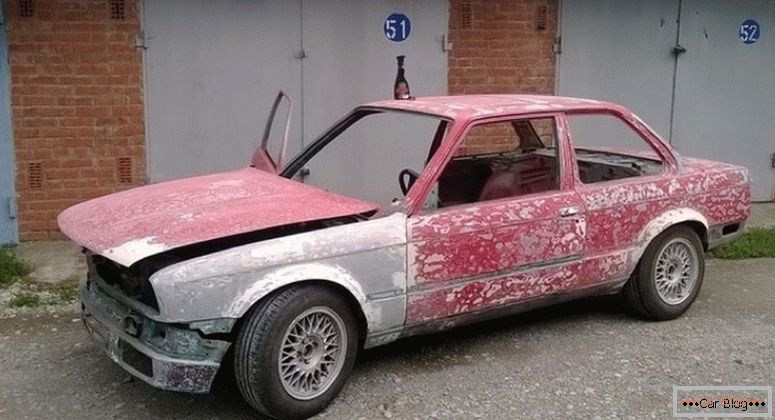In Russia every year, more than 30 thousand people die due to car accidents, and almost ten times more people suffer injuries of various degrees. Such sad statistics could be less if people could help the victims in time, because in almost 80% of cases the deaths could be avoided. This would help in time provided first aid in an accident.
Often death does not occur from injuries that are incompatible with life, but as a result of inept or incorrect actions performed on the resuscitation of victims. Also, the fault of the tragedies is the inaction of the participants in the events, who do not know how to help drivers and passengers who have been involved in the accident.
Content
- 1 Responsibility for not providing assistance
- 2 The most frequent injuries in traffic accidents
- 3 Mandatory actions at the accident site
- 4 Identification of the victim
- 5 Help with coma
- 6 Aid for bleeding
Responsibility for not providing assistance
Drivers involved in traffic accidents and not assisting victims can be prosecuted. These rules are directly spelled out in the Criminal Code of the Russian Federation, Chapter 16 of Article 124 and Article 125 of the 2016 edition.
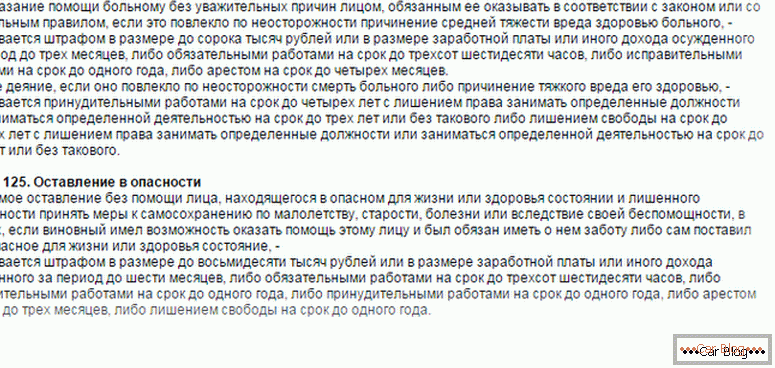
According to the rules of the road, drivers in an accident oblige to provide first aid to victims. If this does not happen, then they can later be extended criminal sanctions, which also provide for financial punishment, corrective labor, or imprisonment.
The most frequent injuries in traffic accidents
A common injury during an accident is fractures or other bone injuries. In more rare cases, there are sprains. Muscle injuries are also infrequent cases of damage to the body. This is accompanied by bleeding, which violate the performance of muscle tissue. In addition to hemorrhages, muscle strains appear.
During significant blood loss, blood pressure drops, and the victim, who will not receive first aid in case of an accident in time, may die. His heart will stop. Cardiac arrest will occur during a sharp blow to the chest area, and with the same effect, the integrity of the spleen is disrupted in the left part.
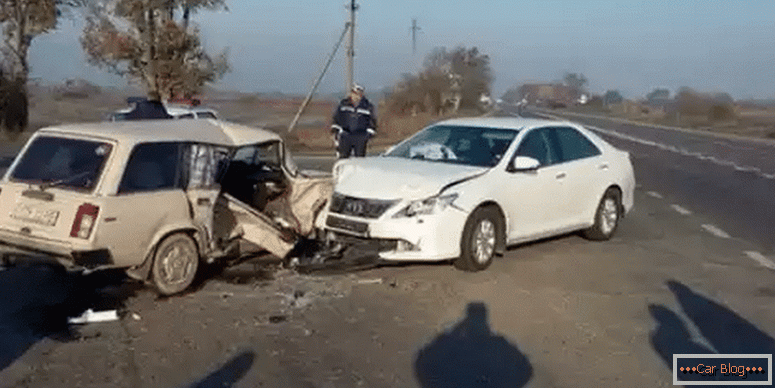
Stab wounds in the area of the pleural cavity are dangerous. With such an impact, the ribs simultaneously break, the patient receives chest contusions, the lungs can be damaged.
Mandatory actions at the accident site
When an accident has occurred, it is necessary to quickly identify its place with the help of the “Emergency Stop” sign and the “Emergency” light signal. This way you can secure the incident area.
Any, including the first first aid in an accident should be provided so as not to create a threat to help. After all, when colliding with poles of electricity some areas may be under voltage. Or the fire started spreading to the gas tank.
You need to know that gasoline cars burn in five minutes.
All actions should be done though quickly, but thoughtfully. It is urgent to call the ambulance. The operator will need to provide current information about the victims:
- the number of people in need of medical care;
- approximate age group of victims (child, elderly, middle-aged, etc.);
- explain the general situation with victims (bleeding, fractures, unconscious);
- give the most accurate address (indicate the nearest visible landmarks);
- leave your data and phone number (it is possible to specify the road for the ambulance).
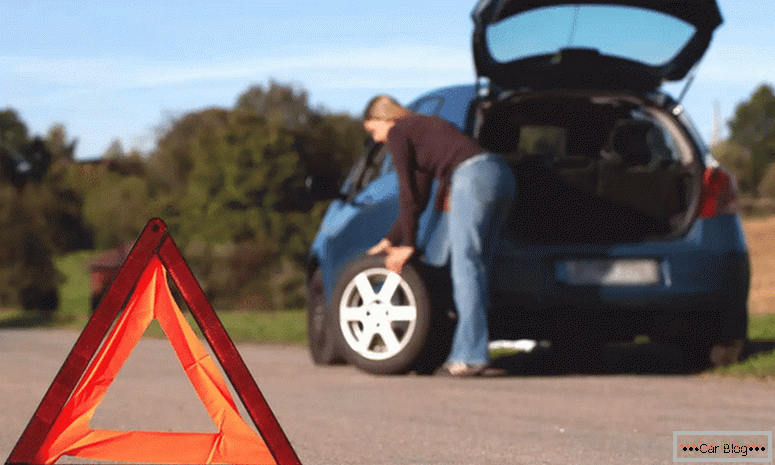
If the injured road crash participants are blocked due to an accident by a car or by another method that they cannot cope with themselves, then the Emergency Situations Ministry should be called. When early extraction is required, it is worth doing it very carefully, so as not to aggravate the situation.
Identification of the victim
Before the ambulance arrives, it is necessary to find out the condition of the patient by asking a couple of questions to reveal the location of the pain. Psychological support is also important. At this moment, two stages of shock can manifest themselves: in the first case there will be a lack of awareness of the position and severity, in the second stage the shock develops, developing into a depressed state. Then fainting can occur.
Loss of consciousness is accompanied by rolling of the eyes, blanching of the skin, the steady state of the body is lost. Attacks can last 1-2 minutes with periodic recovery of consciousness.
If possible, lay such a victim on his back, free his throat from buttoned collars, and give more air. In the first-aid kit should be a bottle of ammonia. Moistening cotton wool or any tissue in this liquid should be periodically brought it to the victim's face.
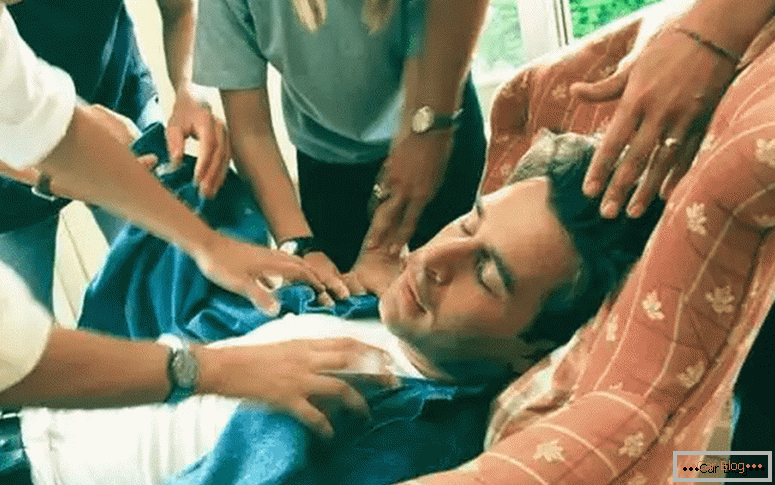
When the victim does not show signs of life, excluding obvious death, it is necessary to apply rehabilitation actions to him. The main signs that reveal if a person is alive consist of the following items:
- obvious or weak heartbeat, which can be determined by touching the left chest area with a hand;
- the presence of an obvious or filamentary pulse, which is determined on the carotid artery in the neck, on the temples or on the inner bend of the elbow or hand
- the presence of breathing can be detected even with a slight raising / lowering of the chest, with the help of a mirror raised to the mouth or nose (it will sweat from breathing), as well as from the waving of cotton, which is also located around the nose or mouth;
- after shining a flashlight in the eye, the pupil should react by narrowing it.
You need to know that during deep syncope, the pupil can barely react to stimuli.
If there is no flashlight at hand, you can close the eye with a palm and quickly open it to see the reaction of the pupil. The presence of any of these signs should be a pretext for independent resuscitation actions and saving lives.
Help with coma
Loss of consciousness, in which a brain coma can occur, is usually accompanied by a condition similar to deep sleep. The pulse will be heard, and when you exhale, there are obvious hoarse sounds. The tongue may adhere to the upper inner wall of the mouth.
This victim can be shifted gently on one side or on the stomach, while ensuring sufficient breathing capacity. To clean your mouth from possible clogging, you can use a clean handkerchief or another piece of cloth. If the breathing and heartbeat functions are disturbed, then resuscitation should begin immediately.
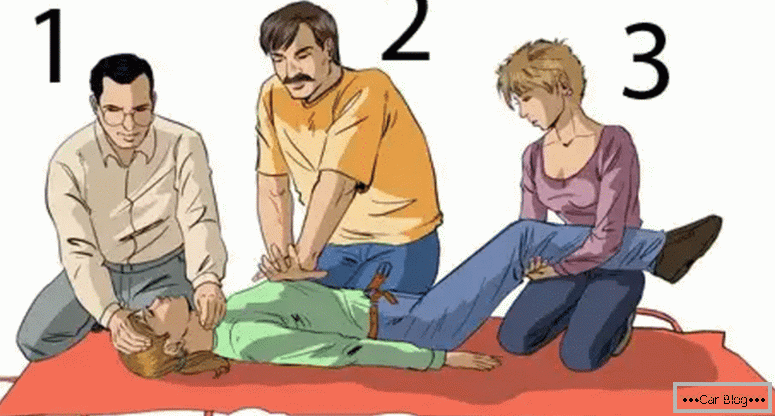
Artificial respiration
Artificial respiration необходимо начинать только в том случае, если отсутствует естественное.
The victim has only 8-10 minutes to return to life without resuscitation, otherwise irreversible processes will occur. Therefore, we must immediately save lives.
The mouth is cleaned of possible blood or other fluids. The chin is aligned in line with the neck. A handkerchief or a bandage is folded several times over the mouth. Having absorbed more air, we exhale it into the victim's mouth for 1 second, while simultaneously pinching his nose. The procedure is done three times with a two-second delay.
See also: What is the difference between a diesel engine and a gasoline engine?
We control the appearance of the pulse in the carotid artery. If not, then you need to perform an indirect heart massage. For every 15 pushes on the chest, 2 breaths are made into the victim's mouth. Usually after 2-3 minutes there are signs of life.
Aid for bleeding
Consider how to provide first aid for injuries resulting from an accident. Such wounds can be chopped, stabbed, torn, etc. In this case, the process is often accompanied by bleeding, sometimes internal, sometimes external. The skin turns pale, weakness increases, loss of consciousness is possible.
There are three types of bleeding:
- arterial - pulsating blood is pushed out by the pulsating method, it is the most dangerous type, as blood flows from the heart
- venous - dark red blood flows continuously from the wound;
- capillary - blood flows from the entire surface of the damage.
It is necessary to block the flow of arterial bleeding using a tourniquet, which is applied 2-3 cm above the blood flow over the clothes. If this is not done, the loss of an adult about one and a half liters of blood threatens death.

A note with overlapping time is required to be attached to the bundle, since it should be removed in the winter in half an hour, and in the warm season no later than in an hour. Having 4-5 minutes to restore blood supply, you can again pinch the blood flow.
When head injuries prevent the penetration of the infection into the wound, covering the area with a sterile dressing, put cotton wool on top and bandage it.
Damage to the abdominal cavity is refilled, and outside the package is fixed with scotch tape. With closed peritoneal injuries, you should lie on one side and bend your knees. If possible, apply a cold to the affected area for 15–20 minutes.
During contusions, tight bandages are applied to eliminate or reduce internal bleeding. In such cases, fractures are possible at the same time, so you need to strive to cool the bruised place and give rest.
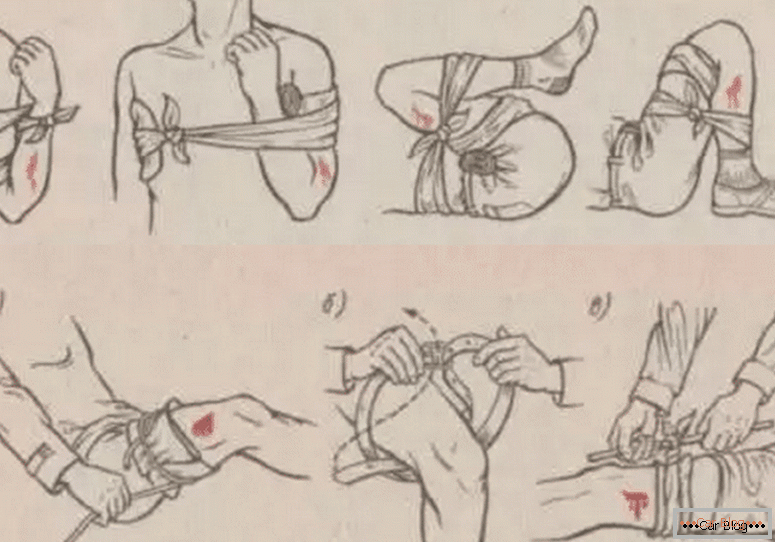
Stopping bleeding
A closed fracture is characterized by swelling and redness. The pain is similar to bruises. The problem area is fixed with a tire. To create it even fit a sheet of hard paperboard.
With an open fracture, a wound and bleeding occurs. Requires additional harness and all procedures with it. With fractures of the ribs, the injured suffer either sitting or reclining. Possible fixation of the fracture, which is done during exhalation.
During exposure to fire clothing, do not run. It is necessary to extinguish it removing the access of oxygen to the fire, covering with a blanket or a tarpaulin. Fire affected areas of skin are covered with sterile wipes. When the area is too large, use a sterile sheet. In no case do not strip off clothing that is burned to the skin.
You can carry the victims yourself on your shoulder, taking it on your arms or on your back. In case of fractures or open injuries, it is necessary to fix the bones or eliminate the bleeding, and then transport.
Transportation of the injured to the hospital is allowed on the surviving vehicle, but after that it is necessary to return to the scene of the accident to give evidence to the DPS inspector.



